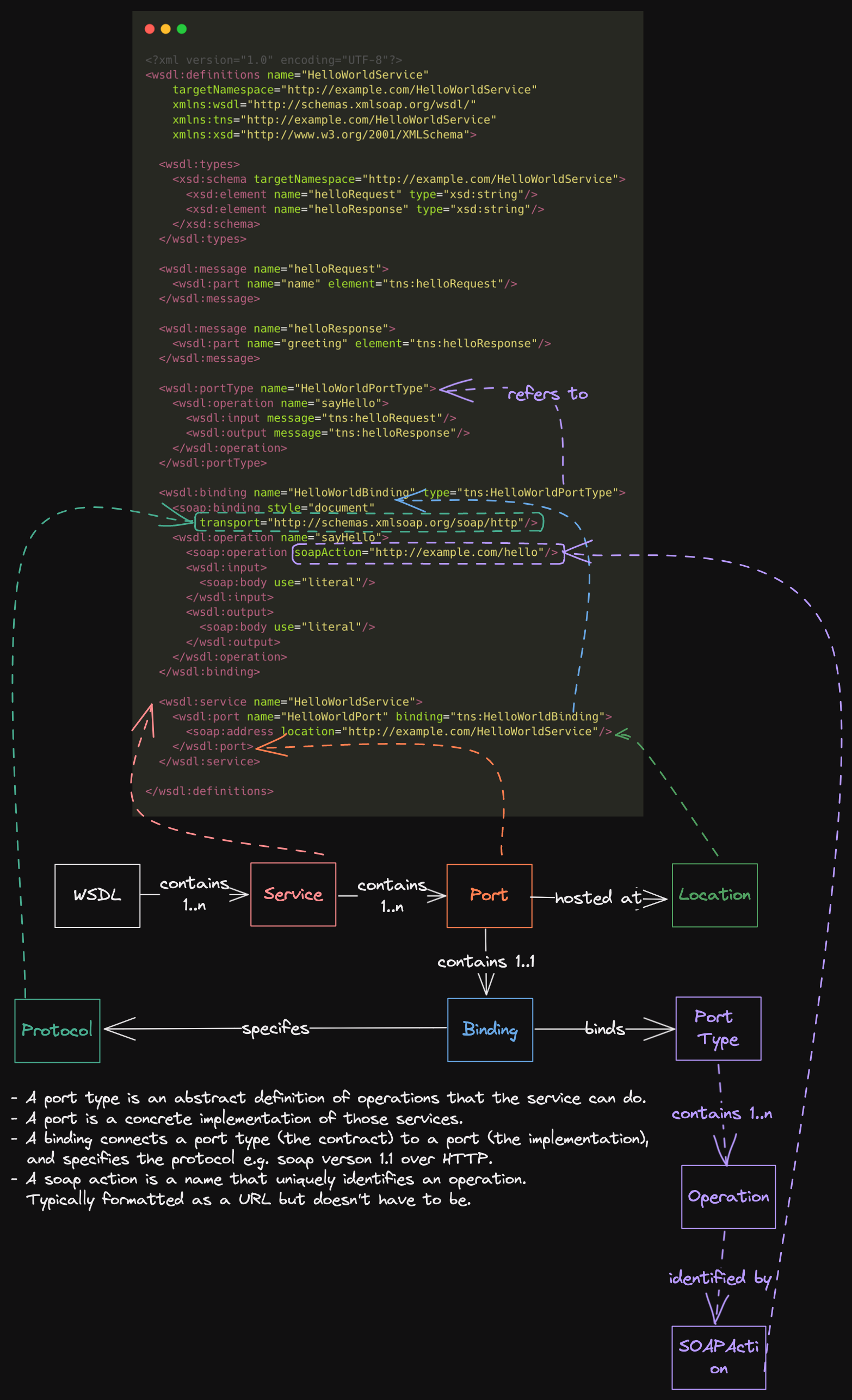Understanding WSDLs
I’ve integrated with a number of systems through SOAP Services. SOAP Services are described using WSDL files (Web Service Description Language). I felt it was worth taking the time to understand the structure of these files. I drew this diagram to summarise the structure:

A WSDL is an XML file that defines one or more Services.
Each service can have one or more endpoints, where each endpoint is a remote procedure call.
A service contains one or more Ports, and a port is an implementation of a Port Type. That’s a little tricky to follow so let’s break this down:
A Port Type is like an interface class. It defines operations that a service can perform along with their request and response objects.
Implementations of Port Types are called Ports. SOAP supports multiple transportation protocols including: HTTP, SMTP and FTP. A Port is an implementation of a port type for one of these protocols.
A Binding specifies the transport protocol that the port implements.
So to summarise: A Service contains Ports, each port implement a Port Type (interface) for different transport protocols. The binding binds the port to the transportation protocol it implements.
Finally, there’s a SOAP Action. The SOAP Action is a unique name that identifies an operation in a binding. It is typically formatted as a URL, but doesn’t have to be. The SOAP Action is sent as an HTTP header. It is is optional, but can be used to route the request to the correct server or for other transportation purposes.